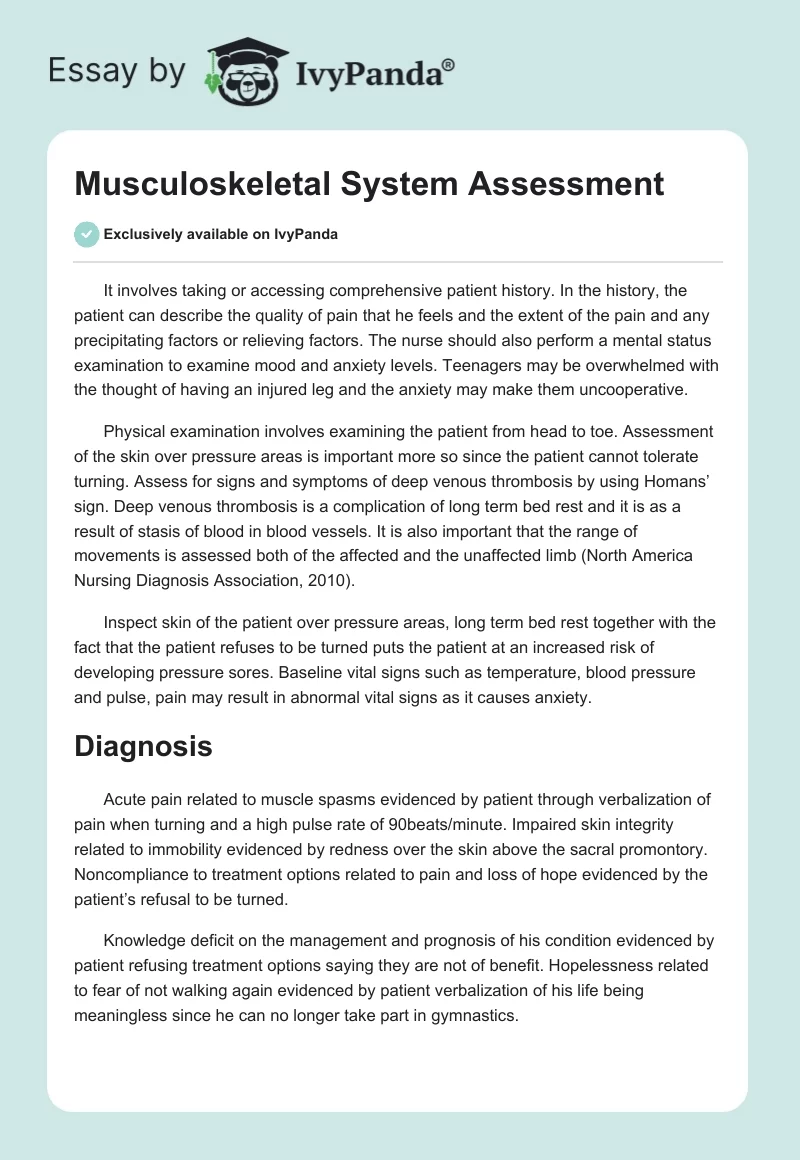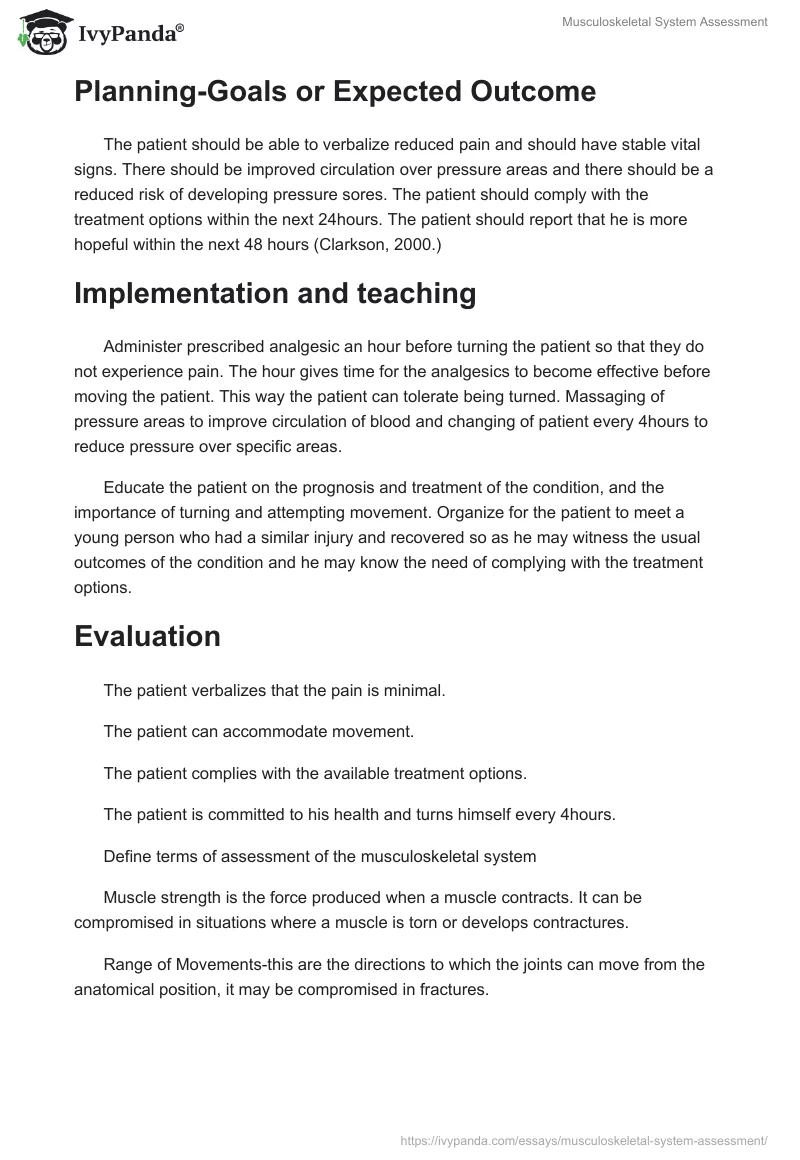It involves taking or accessing comprehensive patient history. In the history, the patient can describe the quality of pain that he feels and the extent of the pain and any precipitating factors or relieving factors. The nurse should also perform a mental status examination to examine mood and anxiety levels. Teenagers may be overwhelmed with the thought of having an injured leg and the anxiety may make them uncooperative.
Physical examination involves examining the patient from head to toe. Assessment of the skin over pressure areas is important more so since the patient cannot tolerate turning. Assess for signs and symptoms of deep venous thrombosis by using Homans’ sign. Deep venous thrombosis is a complication of long term bed rest and it is as a result of stasis of blood in blood vessels. It is also important that the range of movements is assessed both of the affected and the unaffected limb (North America Nursing Diagnosis Association, 2010).
Inspect skin of the patient over pressure areas, long term bed rest together with the fact that the patient refuses to be turned puts the patient at an increased risk of developing pressure sores. Baseline vital signs such as temperature, blood pressure and pulse, pain may result in abnormal vital signs as it causes anxiety.
Diagnosis
Acute pain related to muscle spasms evidenced by patient through verbalization of pain when turning and a high pulse rate of 90beats/minute. Impaired skin integrity related to immobility evidenced by redness over the skin above the sacral promontory. Noncompliance to treatment options related to pain and loss of hope evidenced by the patient’s refusal to be turned.
Knowledge deficit on the management and prognosis of his condition evidenced by patient refusing treatment options saying they are not of benefit. Hopelessness related to fear of not walking again evidenced by patient verbalization of his life being meaningless since he can no longer take part in gymnastics.
Planning-Goals or Expected Outcome
The patient should be able to verbalize reduced pain and should have stable vital signs. There should be improved circulation over pressure areas and there should be a reduced risk of developing pressure sores. The patient should comply with the treatment options within the next 24hours. The patient should report that he is more hopeful within the next 48 hours (Clarkson, 2000.)
Implementation and teaching
Administer prescribed analgesic an hour before turning the patient so that they do not experience pain. The hour gives time for the analgesics to become effective before moving the patient. This way the patient can tolerate being turned. Massaging of pressure areas to improve circulation of blood and changing of patient every 4hours to reduce pressure over specific areas.
Educate the patient on the prognosis and treatment of the condition, and the importance of turning and attempting movement. Organize for the patient to meet a young person who had a similar injury and recovered so as he may witness the usual outcomes of the condition and he may know the need of complying with the treatment options.
Evaluation
The patient verbalizes that the pain is minimal.
The patient can accommodate movement.
The patient complies with the available treatment options.
The patient is committed to his health and turns himself every 4hours.
Define terms of assessment of the musculoskeletal system
Muscle strength is the force produced when a muscle contracts. It can be compromised in situations where a muscle is torn or develops contractures.
Range of Movements-this are the directions to which the joints can move from the anatomical position, it may be compromised in fractures.
References
Clarkson, H. (2000). Musculoskeletal Assessment: Joint Range of Motion and Manual Muscle Strength (2nd ed). Baltimore, Maryland: Lippincott Williams & Wilkins.
North America Nursing Diagnosis Association. (2010). Approved Nursing Diagnosis. Web.


